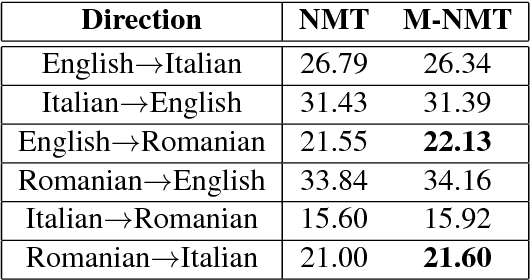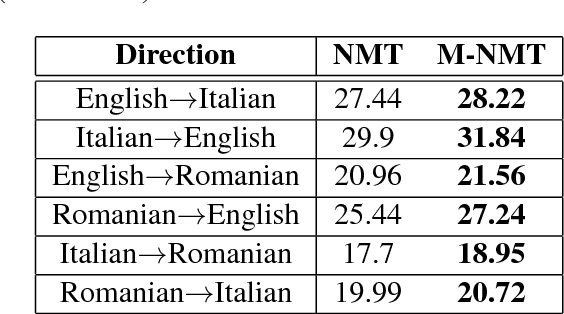Multilingual Neural Machine Translation for Zero-Resource Languages
Paper and Code
Sep 16, 2019



In recent years, Neural Machine Translation (NMT) has been shown to be more effective than phrase-based statistical methods, thus quickly becoming the state of the art in machine translation (MT). However, NMT systems are limited in translating low-resourced languages, due to the significant amount of parallel data that is required to learn useful mappings between languages. In this work, we show how the so-called multilingual NMT can help to tackle the challenges associated with low-resourced language translation. The underlying principle of multilingual NMT is to force the creation of hidden representations of words in a shared semantic space across multiple languages, thus enabling a positive parameter transfer across languages. Along this direction, we present multilingual translation experiments with three languages (English, Italian, Romanian) covering six translation directions, utilizing both recurrent neural networks and transformer (or self-attentive) neural networks. We then focus on the zero-shot translation problem, that is how to leverage multi-lingual data in order to learn translation directions that are not covered by the available training material. To this aim, we introduce our recently proposed iterative self-training method, which incrementally improves a multilingual NMT on a zero-shot direction by just relying on monolingual data. Our results on TED talks data show that multilingual NMT outperforms conventional bilingual NMT, that the transformer NMT outperforms recurrent NMT, and that zero-shot NMT outperforms conventional pivoting methods and even matches the performance of a fully-trained bilingual system.
 Add to Chrome
Add to Chrome Add to Firefox
Add to Firefox Add to Edge
Add to Edge